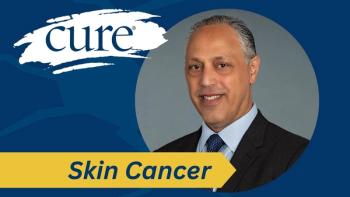
Sensible Sun Exposure May Reduce Melanoma Risk, Study Finds
A recent study outlined both the risks and benefits of sun exposure. Authors say that sensible sun exposure (without getting sun burn) may actually decrease a person's risk of getting melanoma.
Exposure to ultraviolet (UV) radiation from being out in the sun is a leading cause of skin cancer in the United States, prompting many people to lather on sunscreen, seek shade or stay indoors altogether. However, a recent study published in the Journal of Dermo-Endocrinology outlined both the risks and benefits of sunlight. Sensible exposure to sunlight is a key proponent to a healthy lifestyle, noted the authors.
“Advising the public to stay out of sunshine is not a smart thing from a public health standpoint, in my opinion,” David G. Hoel, Ph.D., professor at the Medical University of South Carolina and author of the study said in an interview with CURE.
The study cited the National Health and Nutrition Examination Survey conducted by the U.S. Centers for Disease Control and Prevention (CDC), which stated that 32 percent of Americans have a vitamin D insufficiency. Vitamin D is made in the skin when exposed to sunlight and having high enough levels has been shown to have many health benefits, including
Authors on the study also said that getting the proper amount of sunlight may actually decrease an individual’s risk for getting melanoma.
“The principal identified non-genetic risk factor is ultraviolet radiation (UVR) exposure, and the relationship between melanoma and UVR is two-sided: non-burning sun exposure is associated with a reduced risk of melanoma, while sunburns are associated with a doubling of the risk of melanoma,” the study reads.
People who work outdoors have lower incidences of melanoma than indoor workers, according to the study, which also noted that most melanomas occur on body areas that get lower amounts of sunlight.
Also, the incidence of melanoma has been rising for more than 70 years, according to the study. While there are many proposed explanations for this, such as the depletion of the ozone layer, diagnostic drift, widespread use of UVR devices and the proliferation of large windows in office buildings, authors wrote that none of these explanations are particularly satisfactory for the increase of the disease since the 1930s.
“In the report, we mention how melanoma incidences have been going up steadily in this country,” Hoel said. “We don't have a good explanation other than possibly changes in diagnosis but also the movement of people inside.”
However, that does not mean that sun exposure does not have its risk. While sensible and proper sun exposure can be beneficial on many levels, getting too much — leading to sunburn – can be very damaging.
“Just like anything else in life, it’s about moderation,” Michael F. Holick, M.D., Ph.D, professor of Medicine, Physiology and Biophysics at Boston University School of Medicine said, emphasizing that it is important for each individual to know their sun risk and tolerance levels, which include skin tone, how easily a person burns and the UV index.
To make it easier for individuals to ensure that they are getting the proper and safe amounts of sun exposure each day, Holick and his team created a smartphone app, dminder, that helps users optimize their sun time by offering outdoor recommendations based on location, body type and time of the day. The app also warns users when they might be more at risk for sun burn.
“You never want to get a sunburn. That's the most damaging to your skin and increases your risk for melanoma because it's the number of sunburn experiences that have been associated with increased risk,” Holick said. “What I believe is that people should get themselves a tan without burning.”
Overall, the authors expressed that they wish for a change in the recommendations around sunlight exposure.
“I would hope that organizations such as the CDC would modify a little bit what they put out on their website about watching out for sunlight,” Hoel said. “You don’t want kids growing up with a fear of sunshine.”




